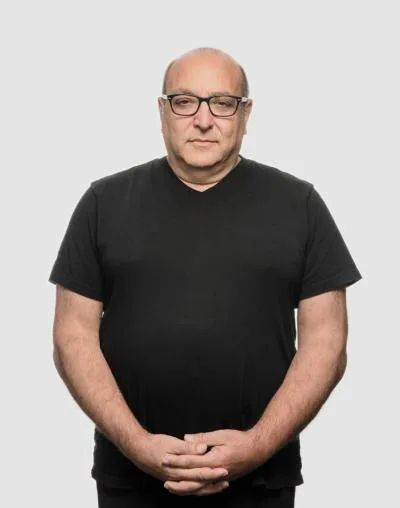This week’s episode of The ADOTAT Show was a wild ride through the world of shoppable TV, helmed by none other than Gary Mittman, the mastermind behind KERV Interactive. Gary’s career has been a whirlwind, from orchestrating high school concert gigs to becoming a pivotal player at MTV, and now, steering the ship at KERV. His journey is like a Netflix series with a plot twist in every episode, and I was determined to dig into every chapter.
Right off the bat, I skipped the usual niceties and went for the jugular. “Gary, seriously, how are you doing?” I asked, making it clear this wasn’t going to be one of those boring, jargon-filled tech interviews. “No tech jargon allowed,” I added for good measure. Gary’s response? He was feeling great, sipping on a protein shake—apparently, the breakfast of pixel-pioneering champions. But I wasn’t about to let him off easy.

We dove straight into the deep end, discussing his seismic shift from rocking MTV stages to coding clickable TV screens. Gary’s career path reads like a script Hollywood would kill for—concert promoter turned tech innovator. “It’s a natural evolution,” he claimed. Sure, and I’m a natural blonde.
I wanted to know how one transitions from the chaos of live concerts to the structured, sometimes stifling world of tech. “What’s more chaotic, Gary, mosh pits or board meetings?” I quizzed, expecting a diplomatic answer. But without missing a beat, he quipped, “Definitely board meetings. Mosh pits are easy; everyone knows the dance.” Touché, Gary. Touché.
Gary Mittman’s venture, KERV Interactive, is doing to TV what the internet did to newspapers: shaking it up and flipping it on its head. Picture this: You’re lounging on your couch, deep into a binge-watch session, when a gorgeous lamp in the background catches your eye. No need to scour the web for it because, with a flick of your remote, you can snag that lamp right then and there. It’s like having QVC embedded in every show, but without the overly enthusiastic hosts pushing ceramic knick-knacks at 3 AM. This isn’t just innovation; it’s a couch potato’s dream come true.
KERV’s tech takes “watch and shop” to a level so seamless, you’d think it was magic. But it’s not sorcery—it’s smart, pixel-level recognition technology. Each item on the screen is tagged and made shoppable, transforming every moment of screen time into a potential shopping spree. Forget pausing the show to Google “where can I buy that watch?” KERV has made it so that the answer is always just a click away. This is viewer engagement on steroids, where every product placement becomes a portal to purchase.
Gary explained how they’re making passive viewers into proactive purchasers. With KERV, the future of advertising is here, and it’s less about interrupting your viewing experience with flashy ads and more about weaving commerce directly into the content. This approach not only enriches the viewer’s experience but also holds the viewer’s attention in ways traditional ads never could. By integrating shopping directly into the viewing platform, KERV ensures that the ads are as unobtrusive as they are effective.
But what does all this mean for the future of television? According to Gary, it’s a game-changer. Interactive ads and shoppable content are set to redefine our expectations of TV watching by turning every viewing session into an interactive experience. This isn’t just about catching your eye with clever ads; it’s about creating a fully immersive experience where viewers can interact with ads in real-time, driven by their immediate interests and desires.
In essence, KERV Interactive is crafting a narrative where you’re no longer just a viewer—you’re a participant. This model doesn’t just benefit consumers by making shopping a breeze; it also creates a goldmine for advertisers who can now convert viewers’ impulses into instant sales, right at the peak of their interest. The potential here is enormous: as viewers grow accustomed to this convenience, the demand for interactive content is likely to skyrocket. KERV isn’t just riding the wave of tech innovation; they’re making the waves themselves.
But every innovation comes with its fair share of hurdles. I asked Gary about the biggest challenges he’s faced in this tech journey. “Transitioning from entertainment to tech wasn’t just a hop but a giant leap,” he admitted. Navigating the corporate labyrinth, securing funding, and convincing skeptics were just a few of the roadblocks. But if there’s one thing Gary’s history shows, it’s that he’s no stranger to overcoming obstacles.
We talked about the nitty-gritty of KERV’s technology. Gary’s eyes lit up as he described how their pixel recognition tech works. “It’s all about making every pixel on the screen not just visible but viable,” he said. KERV’s technology can identify and tag every object on screen, turning your favorite TV show into a virtual shopping mall. It’s the kind of innovation that makes you wonder why no one thought of it sooner.
Of course, I had to ask about the competitive landscape. With giants like Amazon and Walmart dipping their toes into shoppable TV, how does KERV plan to stay ahead? Gary was unfazed. “We’re not just keeping up; we’re setting the pace,” he declared. KERV’s edge lies in its sophisticated tech and seamless integration, making it easy for consumers to shop without interrupting their viewing experience.
Before wrapping up, I threw one last curveball. “What’s next for KERV, Gary? World domination?” He laughed but didn’t deny it. “We’re focusing on expanding our reach, improving our tech, and staying ahead of the curve. The future is all about interactive content, and we plan to be at the forefront of that revolution.”
Gary Mittman’s optimism about the future of shoppable TV is more contagious than a viral TikTok dance. By the end of our spirited chat, I was not just convinced; I was ready to preach the gospel of interactive TV. We’re not just tiptoeing into a new era; we’re diving headfirst into a world where television is as interactive as a late-night Twitter feud. This isn’t your grandma’s TV experience, where passive consumption was the norm. No, this is a brave new world where your remote is your retail gateway, making every lounge session a potential shopping spree. Thanks to tech wizards like Gary, television is evolving from a mere entertainment medium into a vibrant, interactive marketplace.
The future of TV blurs the line so effectively between entertainment and e-commerce that soon we might forget there was ever a division. Imagine a world where watching a cooking show and buying the chef’s blender is as seamless as binge-watching your favorite series. Gary’s vision is turning TV screens into shopping carts, and the implications are as significant as they are thrilling. It’s a mash-up of Silicon Valley tech with Madison Avenue sleekness, transforming passive viewers into active participants. This isn’t just changing how we shop; it’s revolutionizing how we engage with content. The couch potato is evolving, folks—now we’re shopping potatoes, clicking our way through episodes and filling our carts in between plot twists.
In this burgeoning landscape, the opportunities are as vast as they are lucrative. For brands, this integration of e-commerce into entertainment means their products can leap off the screen and into consumers’ homes with just a click. For consumers, it means the end of frantic Google searches for that perfect lamp spotted in a sitcom. Gary’s work is pioneering a shift so profound that the ripple effects will be felt across industries, from advertising and retail to tech and media. As we wrap our heads around this brave new world of TV, one thing is clear: the future is not just interactive; it’s transactional. Thanks to visionaries like Gary, we’re not just watching the future unfold; we’re clicking our way into it.
So, whether you’re a tech enthusiast, a shopaholic, or just someone who loves binge-watching TV, keep an eye on KERV Interactive. They’re not just changing the channel; they’re changing the game. And who knows, the next time you’re watching your favorite show, you might just end up buying that snazzy lamp after all.
Tune in, turn up, and maybe even shop a little. Thanks to Gary, we’re not just viewers anymore; we’re participants in a new, interactive world of television.




